Art World
Frances Stark and Wu Tsang Are Among the Six Nominees for the 2018 Hugo Boss Prize
The winner will receive $100,000 and a solo show at the Guggenheim.
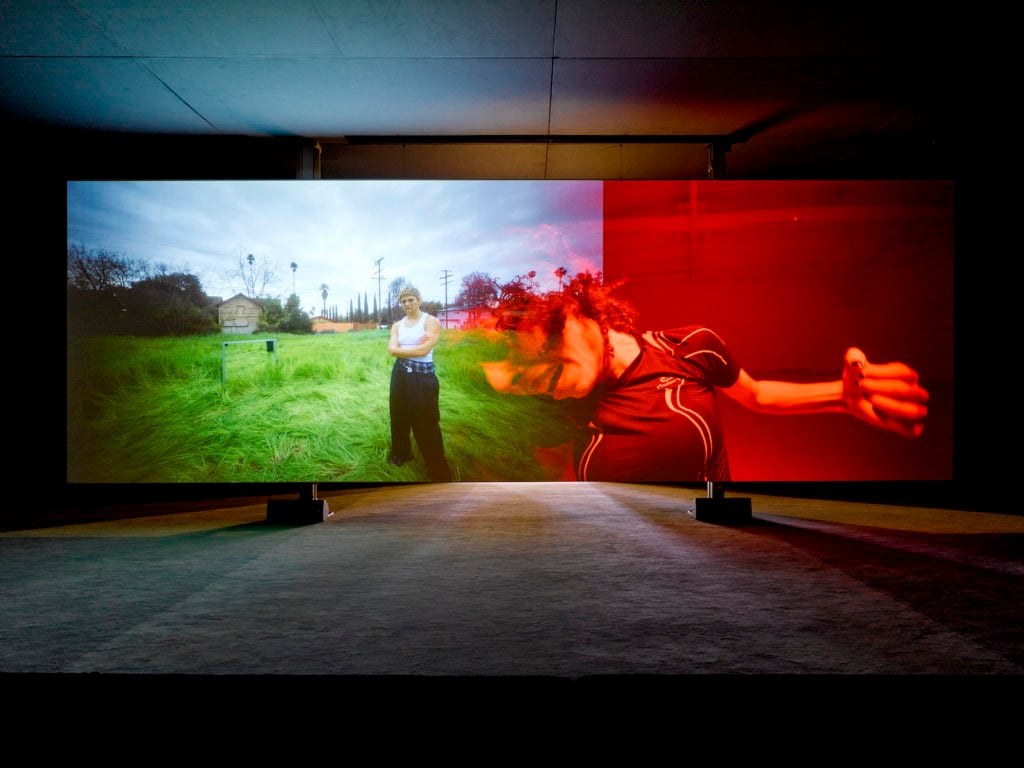
The winner will receive $100,000 and a solo show at the Guggenheim.

Sarah Cascone

The six artists in the running for the 2018 Hugo Boss Prize are Bouchra Khalili (born 1975), Simone Leigh (b. 1967), Teresa Margolles (b. 1963), Emeka Ogboh (b. 1977), Frances Stark (b. 1967), and Wu Tsang (b. 1982).
Nancy Spector, the prize’s jury chair and chief curator of the Solomon R. Guggenheim Museum, praised the finalists in a statement for “working at the vanguard of contemporary art practice, exploring urgent social issues, and providing new artistic vocabulary through which to examine personal and universal themes.”
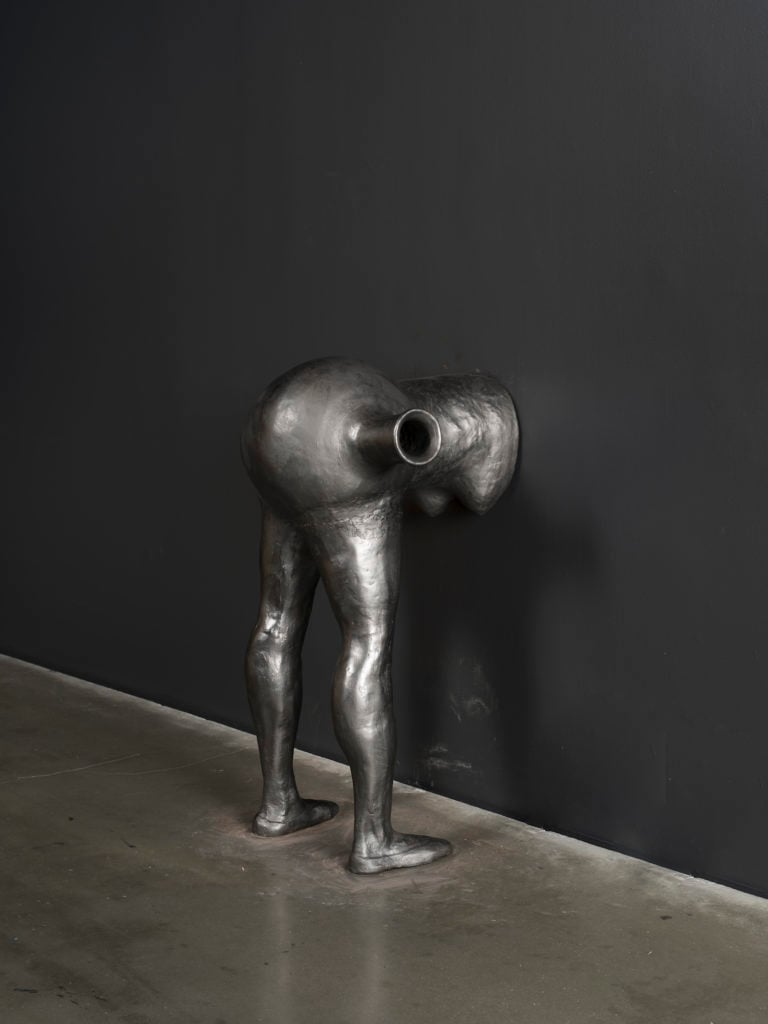
Simone Leigh, Dunham II (2017). Photo by Farzad Owrang, ©Simone Leigh; courtesy of the artist and Luhring Augustine, New York.
The prestigious $100,000 award, presented biannually to a visual artist since 1996, is sponsored by Hugo Boss and administered by the Solomon R. Guggenheim Foundation. The prize also comes with a solo exhibition at the Guggenheim Museum.
Born in Casablanca, Khalili splits her time between Berlin and Oslo, creating film and photography work about migration, borders, colonialism, place, and belonging. She has had solo shows at institutions including the Philadelphia Museum of Art (2017); the Museum of Modern Art, New York (2016); the Palais de Tokyo, Paris (2015); the Museu d’Art Contemporani de Barcelona (2015); and the Pérez Art Museum Miami (2013–14).
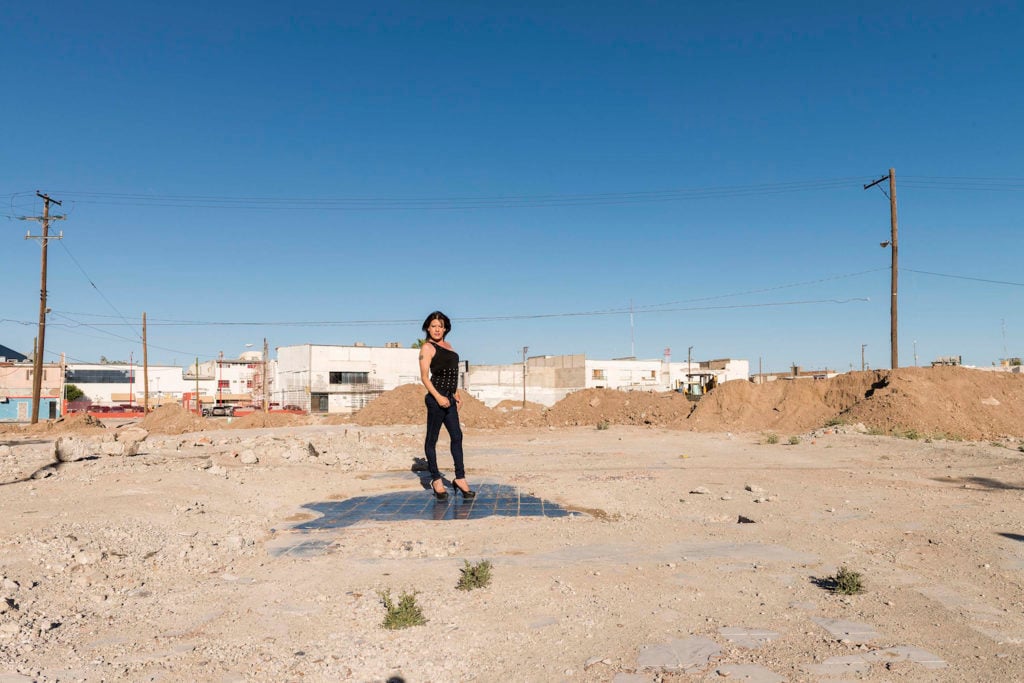
Teresa Margolles, Dance floor of the discotheque “La Madelon” (Pista de baile de la discoteca “La Madelon”), 2016. Courtesy of the artist and LABOR.
Leigh, who lives in Brooklyn, takes on topics of ethnography, political history, the African diaspora, feminism, and folklore in her sculpture, video, and performance art. Her solo and two-person exhibitions include shows at the Hammer Museum (2016); the Studio Museum in Harlem (2016); the Crystal Bridges Museum of American Art, Bentonville, Arkansas, (2016); the Tate Exchange and Tate Modern (2016); and the New Museum (2016).
Margolles, a Mexican artist, makes sculptures and installations, sometimes using bodily fluids, to reflect on the problems of violence, death, and poverty. She has had solo shows at the Musée d’art contemporain de Montréal (2017); the Museo de la Ciudad, Querétaro, Mexico (2017); the Neuberger Museum of Art (2016); the Museo Universitario de Arte Contemporáneo (2012); the Los Angeles County Museum of Art (2010); and the Museum für Moderne Kunst (2004).
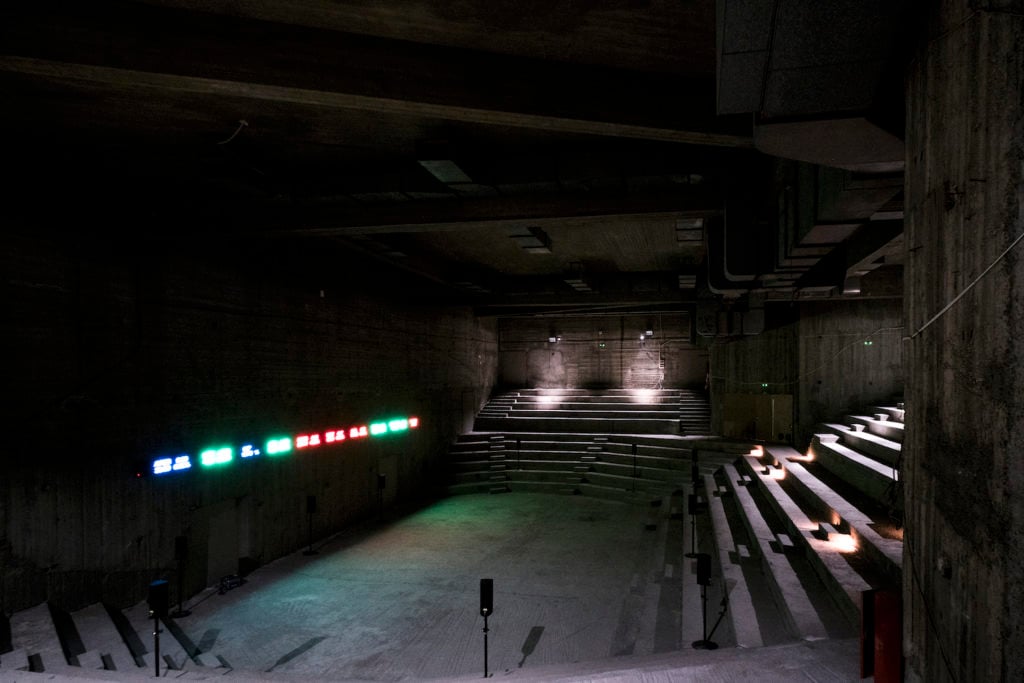
Installation view of Emeka Ogboh’s The Way Earthly Things Are Going (2017) at documenta 14, Athens Conservatoire. Photo courtesy of Mathias Völzke.
Living in Lagos and Berlin, Ogboh considers cities’ auditory identities, creating soundscape installations that treat sound as a sculptural medium that can raise such issues as nationalism and xenophobia. His museum solo shows include presentations at the Smithsonian National Museum of African Art (2016); and the Modern Art Museum, Gebre Kristos Desta Center in Addis Ababa (2016). This year, his work was included in documenta 14 and Skulptur Projekte in Münster, and the Kunsthalle Baden Baden is currently showing his solo exhibition “If Found Please Return to Lagos” (through February 4, 2018).
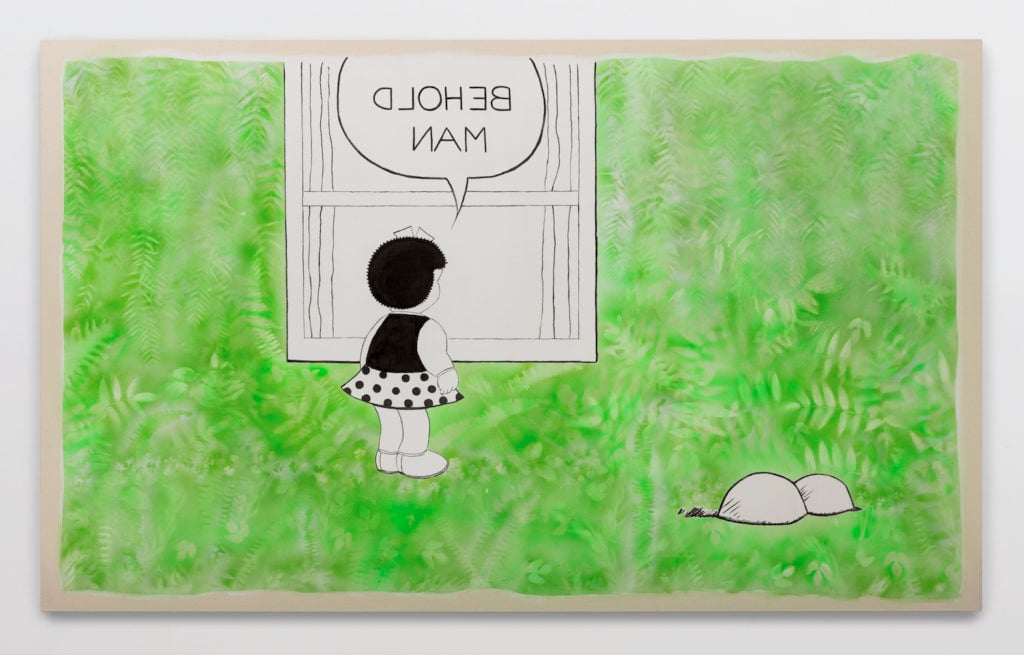
Frances Stark, Behold Man (Nancy and Sluggo recto verso pendant pair), 2017. Photo by Frederick Nielsen, courtesy of the artist and the Institute of Contemporary Art, Miami.
The Los Angeles-based Stark works in drawing, collage, painting, video, performance, and digital projects, considering the human condition and the simultaneous vulnerability and hubris inherent in self identity. She has had shows at the Museum of Fine Arts, Boston (2016); the Hammer Museum (2015–16); the Art Institute of Chicago (2015); the Hayward Gallery, London (2014); MoMA PS1 (2011); the Centre for Contemporary Arts, Glasgow (2010); and Portikus, Frankfurt (2008).
Focusing on historically marginalized queer and transgender communities, Los Angeles’s Wu Tsang works in film, video, and performance. She has had solo shows at FACT Centre, Liverpool (2017); Antennae Space, Shanghai (2017); 356 Mission Road (2016); and the Migros Museum, Zürich (2014).
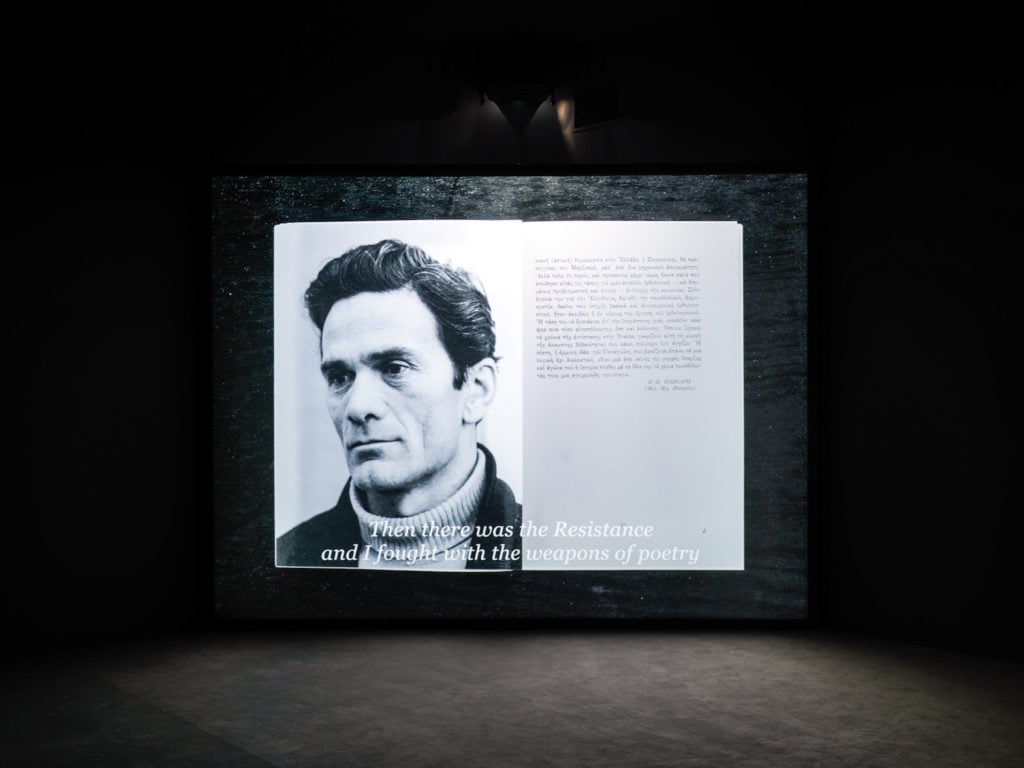
Installation view of Bouchra Khalili’s The Tempest Society (2017) at Documenta 14, Athens School of Fine Art. Photo by Stathis Mamalakis, courtesy of the artist.
In 2016, Anicka Yi won the prize out of a field of finalists that included Tania Bruguera, Mark Leckey, Ralph Lemon, Laura Owens, and Wael Shawky. Previous winners include Paul Chan, Danh Vo, Matthew Barney, Rirkrit Tiravanija, and Pierre Huyghe.
The next winner will be announced in fall 2018, with a solo show scheduled for early 2019.